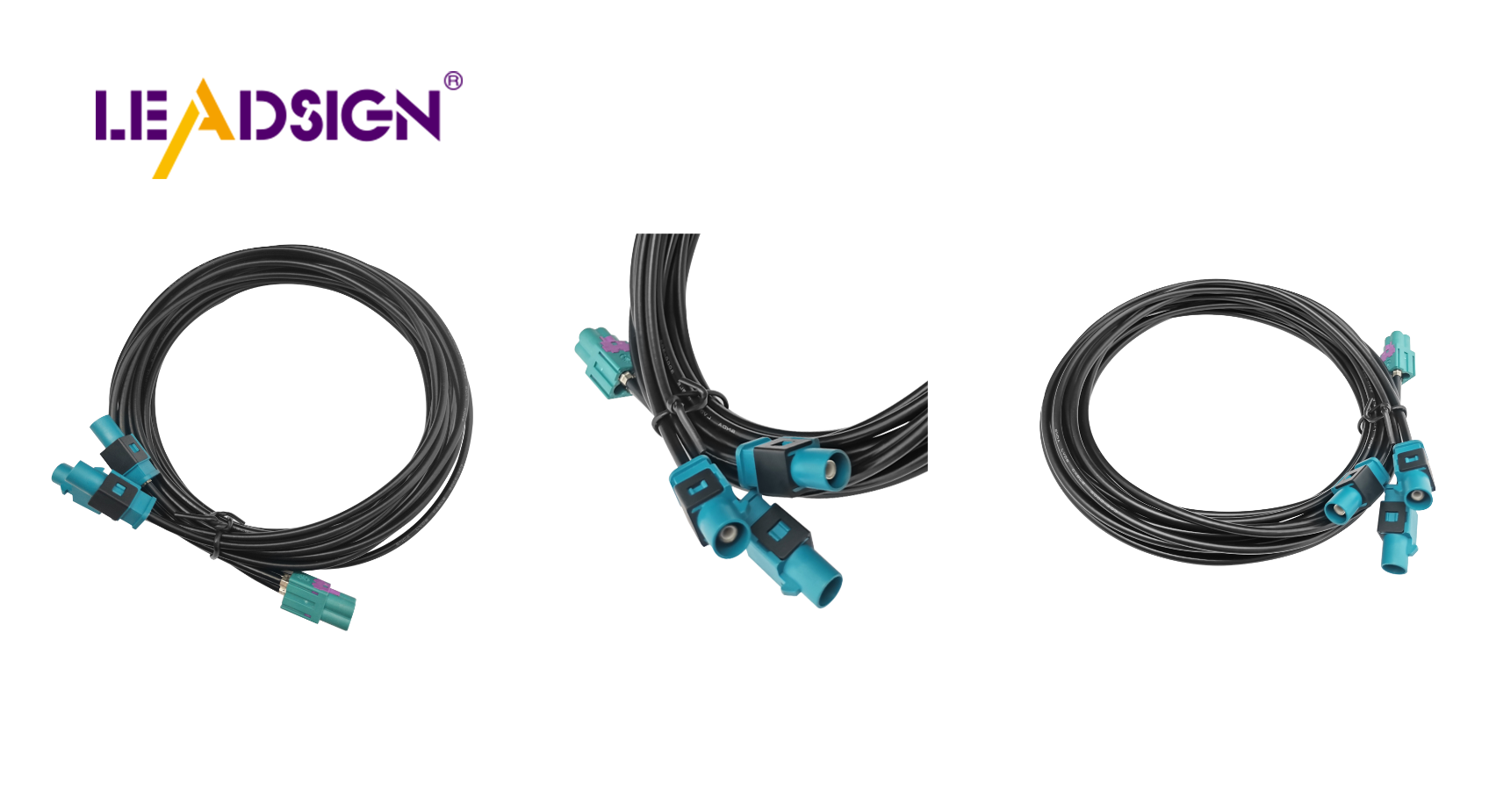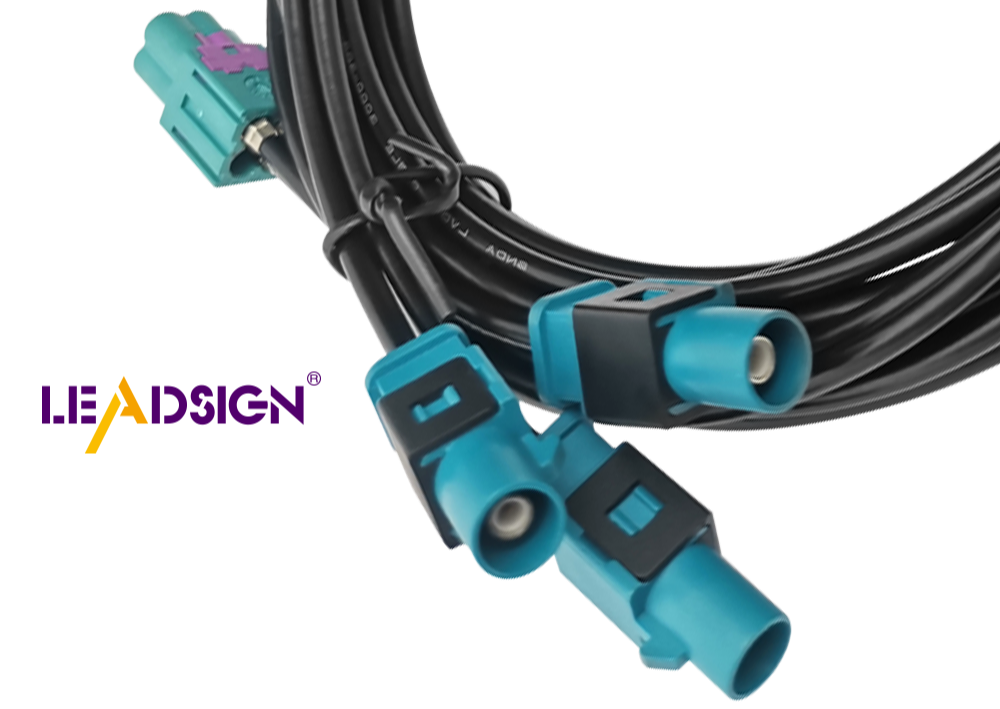Exploring Automotive Wiring Connector Types

Automotive wire connectors play a crucial role in ensuring your car operates efficiently. These connectors join various electrical components, enabling features like the radio and safety systems to function properly. As cars become more sophisticated, the demand for robust connectors increases. In 2023, the market for these connectors was valued at USD 6.89 billion and is projected to grow by 6.7% annually from 2024 to 2030. There are several types of wire connectors automotive, and selecting the appropriate one is essential for optimal vehicle performance.
Basics of Automotive Wiring Connectors
Definition and Purpose
What are wiring connectors?
Wiring connectors are important parts in your car's electric system. They link wires to make a complete circuit, helping different systems talk to each other. These wiring connectors help parts like the engine and sensors work smoothly. By making strong connections, they keep your car safe and working well.
Why are they essential in vehicles?
You might ask why wiring connectors matter so much. They help different car parts communicate. Without them, your car's systems wouldn't work right. Connectors keep circuits steady, which is key for safety and good performance. As cars get more high-tech, we need better connectors, especially with more electric cars.
Key Features
Durability and reliability
When picking wiring connectors, choose ones that last long and work well. They must handle tough conditions like heat and shaking. Newer connectors are built to be tough against these things, keeping connections strong over time. This strength is vital for your car's safety and performance.
Compatibility with different systems
Another key thing about wiring connectors is fitting with many systems. Your car has lots of parts with special needs. Connectors must match these needs to help systems talk easily. By choosing the right connectors for your car, you can boost how it works overall.
Historical Changes in Wiring Connectors
Early Beginnings
First designs and materials
Long ago, car wiring connectors were very basic. People used simple cloth-covered wires to connect parts. These old designs weren't strong or fancy enough for today's cars. The materials wore out quickly, causing bad connections. As people wanted better cars, they needed stronger wiring.
Changes in the car world
The car world changed a lot with new wire harness ideas. You can see how these went from simple to complex systems. This change helped make electric cars and other cool tech possible. Making connector technology better was key for strong and reliable connections. These upgrades made sure cars worked well and safely, even when things got tough.
New Ideas Today
Tech improvements
Today, tech has changed wiring connectors a lot. Now there are connectors that last longer and handle more data. They can take high heat and shaking, keeping your car's systems steady. These changes let cars have smarter electronics, making them safer and work better.
Effect on how cars work
These new changes really help how cars perform. With better connectors, car parts talk to each other more easily. This makes the whole car run smoother and use less energy. For example, fast data connectors help with self-driving features and safety tools. So you get a safer ride! The growth of wiring connectors keeps changing the future of cars, leading to even cooler vehicles.
Types of Automotive Wiring Connectors

Knowing different wire connectors helps your car's electric parts work well. Each kind has special features, uses, good points, and bad points. Let's look at some common types.
Blade Connectors
Features and uses
Blade connectors have a flat metal piece that fits into a slot. They are used in cars where you need to disconnect quickly, like fuse boxes or batteries. Their design makes it easy to put in and take out, perfect for places needing frequent checks.
Good and bad points
Good Points:
Easy to connect without tools.
Hold tight when crimped right.
Bad Points:
Can get loose from shaking.
Might rust if wet, hurting their use.
Pin Connectors
Features and uses
Pin connectors have a pin-and-socket setup for strong connections in high-power spots. You see them in headlights and starters where strength is key. They do well with heat and shaking, keeping things steady.
Good and bad points
Good Points:
Great for high-power needs.
Strong in tough car conditions.
Bad Points:
Need exact fit to connect right.
Harder to unplug than blade ones.
Pigtail Connectors
Features and uses
Pigtail connectors link many wires together easily. They have short wires with a connector on one end to join existing wires. This is great for adding new parts or fixing wires without much work.
Good and bad points
Good Points:
Make joining many wires simple.
Handy for quick fixes or changes.
Bad Points:
Can be bulky if not neat.
Might need extra cover to stop shorts.
Each connector type has its job in cars. By knowing their features and uses, you can pick the right one for your car's electric systems to work safely and well.
Terminal Blocks
Characteristics and uses
Terminal blocks are useful wire connectors. They join many wires in one spot. This makes them great for complex setups. You see them in control panels and boards. Their design is modular, so you can add or remove wires easily. This flexibility makes them a top choice when space and order matter.
Advantages and disadvantages
Advantages:
Easy to manage: They help organize wires, reducing mess.
Flexible design: Change connections without messing up the system.
Durable: Handle heat and shaking well for steady performance.
Disadvantages:
Size: Can be big, not fitting all car needs.
Installation: Needs careful setup for safe connections.
Bullet Connectors
Characteristics and uses
Bullet connectors are common wire connectors too. They have a round shape for quick wire links. Use them where you often connect and disconnect, like lights or speakers. Their simple design is easy even for beginners.
Advantages and disadvantages
Advantages:
Quick connection: Fast to put together or take apart.
Compact size: Small enough for tight spaces.
Disadvantages:
Limited durability: May not last in tough conditions like shaking.
Potential for disconnection: Can loosen if not secured right.
Scotch Locks
Characteristics and uses
Scotch Locks are special among types of wire connectors automotive. They let you join a new wire without cutting or soldering the old one. Perfect for quick fixes or changes, like adding lights or gadgets.
Advantages and disadvantages
Advantages:
Ease of use: Connect wires with no special tools needed.
Time-saving: Quickens adding new connections.
Disadvantages:
Reliability: Might not hold well in shaky places.
Potential for corrosion: Wetness can cause rust, hurting function.
Knowing these types of connectors helps pick the best one for your car's electric parts. Each type has unique features, ensuring safety and good work in your projects.
Practical Parts of Wiring Connectors
Knowing about wiring connectors is key for your car's electric systems to work well. This part will show you how to install and take care of different wire connectors.
How to Install
Needed Tools
To put in wiring connectors right, you need good tools. Here’s a list:
Wire Strippers: These take off the plastic cover from wires without harm.
Crimping Tool: Use this to attach connectors tightly to wires.
Screwdriver: Needed for terminal blocks and some other connector types.
Multimeter: Checks if electrical connections are working fine.
Easy Steps
Putting in wiring connectors has steps. Follow this guide for success:
Pick Right Connector: Choose the best type of wire connectors automotive for your job. For example, use pin connectors for headlights.
Pick Right Connector: Choose the best type of wire connectors automotive for your job. For example, use pin connectors for headlights.
Connect the Wire: Put bare wire into the connector. Use crimping tool to make it tight. For terminal blocks, use screwdriver.
Check Connection: Use multimeter to test connection. Make sure there’s no resistance and circuit is whole.
Keep Wires Safe: After installing, tie wires with cable ties so they don’t move or come loose.
Care and Fixing Problems
Usual Problems
Wiring connectors can have problems over time like:
Loose Connections: Shaking can make them loose.
Rusty Parts: Wetness can cause rust, especially in bullet connectors.
Old and Worn Out: Over time, they might break down from weather.
Fixes and Tips
Fix these problems fast to keep your car's electric systems lasting long:
Look Often: Check connectors often for wear or rust signs. Change bad ones quickly.
Use Covers: Put covers on connectors in tough spots to stop rusting.
Upgrade When Needed: As tech gets better, think about new types of wire connectors automotive, which last longer and work better.
Upgrade When Needed: As tech gets better, think about new types of wire connectors automotive, which last longer and work better.
By knowing these parts well, you can keep your car’s electric systems working great! Picking the right types of wire connectors automotive and doing proper installs and care will keep your car safe and running smoothly.
Q&A Section
Common Questions
How to pick the right connector?
Choosing the correct connector for your car's electric system is important. You should think about some things to make sure it connects well. Here's an easy guide to help you choose:
Know the Use: Find out where you'll use the connector. Different wire connectors do different jobs. For example, blade connectors are good for quick unplugs, while pin connectors are better for strong power needs.
Check if it Fits: Make sure the connector fits your car's systems. Look at size, shape, and electric details. A good fit means it will work right.
Think About Strength: Pick connectors that can handle tough conditions like heat and shaking. Strong ones last longer and keep working well.
Look at How Easy It Is to Install: Some connectors are easier to put in than others. If you want simple setup, choose ones that need few tools.
Consider Cost: While quality matters, also think about your money plan. Compare different types of wire connectors automotive to find a good deal.
Connector Expert: "Connectors are key parts of any electric circuit or gadget."
What shows a connector is bad?
Bad connectors can cause problems in your car's electric system. Spotting signs early helps stop more damage. Here are signs of a bad connector:
On-and-Off Electric Problems: If car parts work sometimes but not always, a bad connector might be why. Loose or rusty ones can mess up electricity flow.
Seeable Damage: Check for cracks or rust on connectors. These show they might not work well.
Too Hot to Touch: If a connector feels hot, it could be broken because poor links make heat build up.
Weird Noises: Listen for buzzing sounds from the electric system; these mean bad connections in wires.
Warning Lights On Dash: Watch for warning lights; they can show electric issues like bad connectors.
Car Mechanic at Vann York Toyota: "Connectors make sure parts link safely and reliably."
By knowing these signs, you can fix problems with your car’s connectors fast. Regular checks of types of wire connectors automotive help keep your car's electric systems working well.
Choosing the right wire connectors is important for your car. Each connector has a job, helping your car's electric parts work well. Learn about different wire connectors and new ideas. The future of car wiring connectors looks exciting. Engineers are making better systems all the time. By knowing how car wiring has changed, you see why picking the right connectors matters. Keep learning to keep your car up-to-date with new tech.
See Also
Discovering Advantages of Fakra Car Connectors
Essential Information on HSD Connectors for Cars
Significance of Fakra Car Connectors in Today's Automobiles

